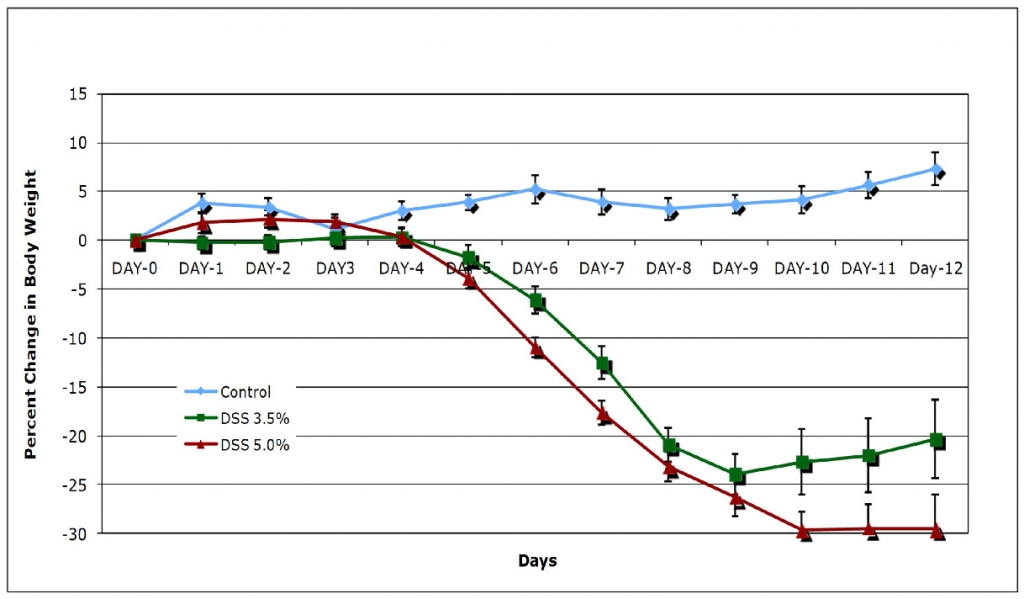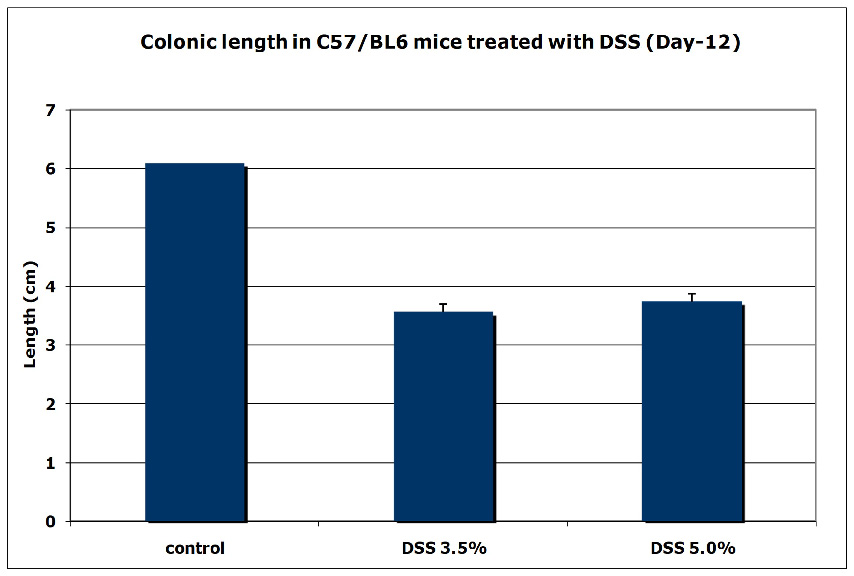

Inflammatory Bowel Disease (IBD) mainly comprises of Ulcerative Colitis and Crohn’s disease and is characterized by repetitive episodes of inflammation of the gastrointestinal tract caused by an abnormal immune response to gut microflora. The common symptoms of IBD are diarrhea, fatigue, blood in the stool, reduced appetite, weight loss, abdominal pain, and cramping.
Aragen scientists have developed a murine model of IBD by chemical induction method. Experiments were performed on C57BL/6 female mice. The subject animals were divided into three groups for the investigation. The first group of animals received normal water. The second group received Dextran Sodium Sulfate (DSS) solubilized water at a concentration of 3.5% (v:v) and the third group received DSS solubilized water at a concentration of 5% (v:v). DSS causes intestinal inflammation by disrupting the large intestine’s epithelial monolayer lining, enabling proinflammatory intestinal contents (e.g., bacteria and their products) to diffuse into underlying tissue.
There were no dosage restrictions during the study i.e. the animals always had access to water and could drink freely. The study lasted three weeks, with the animals being acclimatized to standard conditions for the first eight days, DSS induction for the following five days, and for the last seven days, the animals were under observation for IBD symptoms such as body weight change, rectal bleeding, stool consistency, and the ratio of colon mass to length.
Results demonstrated that the control group’s body mass remained nearly constant throughout the study, but both treatment groups lost weight on day 5 of dosage, with the higher dose of DSS being more effective (Figure 1). Following the onset of IBD, the body weight drops for a variety of reasons, including nutritional loss due to diarrhoea or intestinal bleeding, or an increase in the metabolism to combat the disease and its symptoms.

In contrast to the bodyweight, colonic wet increased in the DSS induced group as compared to the controls (Figure 2) whereas the length of the colon size decreased in the treatment group (Figure 3). Both observations are the result of disruption of the the epithelial monolayer lining of the large intestine

The above findings revealed that the DSS-treated groups exhibit symptoms that are comparable to those seen in humans with IBD, indicating that these models can be utilized to investigate the pharmacodynamics and pharmacokinetics of various drugs for treating IBD. Furthermore, different types of models i.e., acute, chronic, and relapsing can be developed by varying the concentration of DSS and the frequency of administration.
